Liver fluke is a common parasite on Irish farms, one that can cause serious problems if left unchecked. Ireland’s mild, wet climate makes it an ideal environment for liver fluke to thrive.
Cattle affected with liver fluke can have reduced weight gain, fertility and milk yield. In very advanced stages, bottle jaw and anemia can occur.
While it’s been a relatively dry grazing year, the last few weeks of grazing turned wet, especially in the west of the country.
The most recent Department of Agriculture fluke monitoring report hasn’t been published yet, but the risk is nearly always high in the west and south west, with a moderate risk in the east and south east.
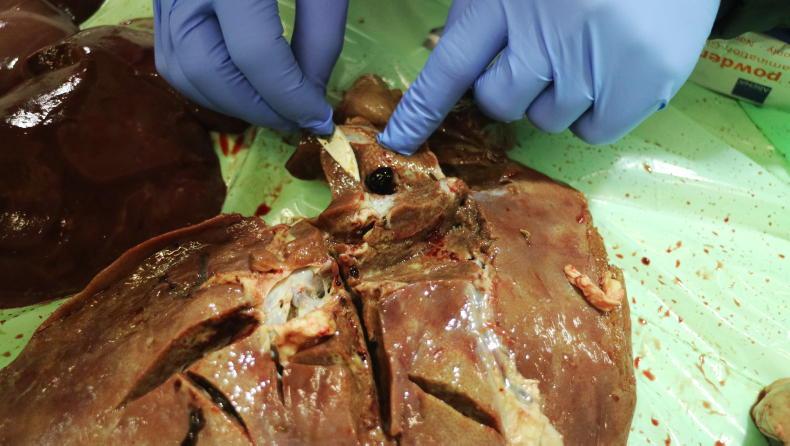
A blood clot in a liver damaged by liver fluke.
Regardless of where you are in the country, you should remain vigilant for the disease and at the very least ask about animals’ livers when they are being slaughtered.
Most factories feed into the AHI/ICBF beef health check system, where farmers receive reports on liver damage as a result of fluke infestation or lung damage as a result of pneumonia.
Farmers who opted for the faecal sampling option as part of the BEEP-S scheme should use these results in formulating a plan for a farm.
Liver fluke needs an intermediate host – the mud snail – to complete its life cycle. These snails live in poorly-drained, water-logged areas on the farm.
If animals are infected with adult liver fluke while on pasture, the fluke eggs are released, hatch and enter the snails, where they undergo further development.
The fluke parasites leave the snails and return to the pasture, usually from late summer to autumn, as an infective stage that can then be eaten by grazing animals (Figure 1).
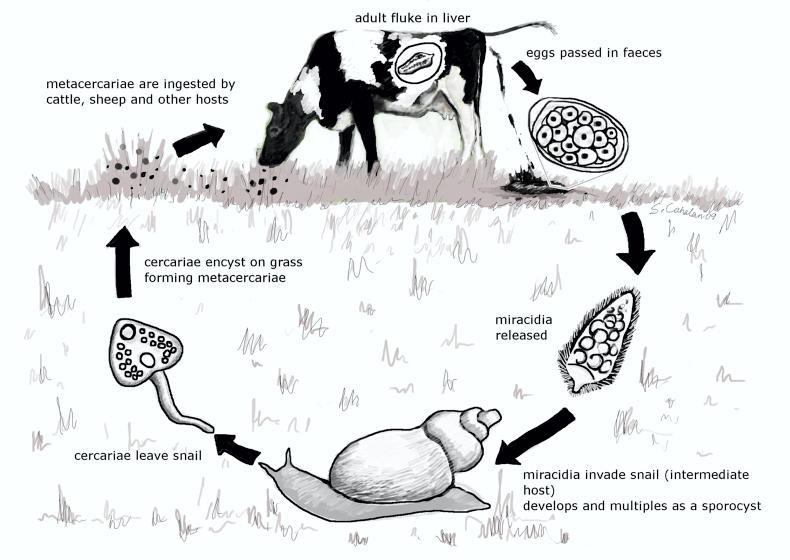
Figure 1.
Control
Triclabendazole-based doses are the only product that can kill early immature, immature and adult liver fluke, with an effectiveness of between 90% and 100%. These have been widely used in cattle herds and sheep flocks and this is one of the reasons resistance has developed. Remember that mature fluke is over eight weeks of age, so if you are using a product that is only active against mature fluke, animals must be housed for at least eight weeks to get high efficiency.
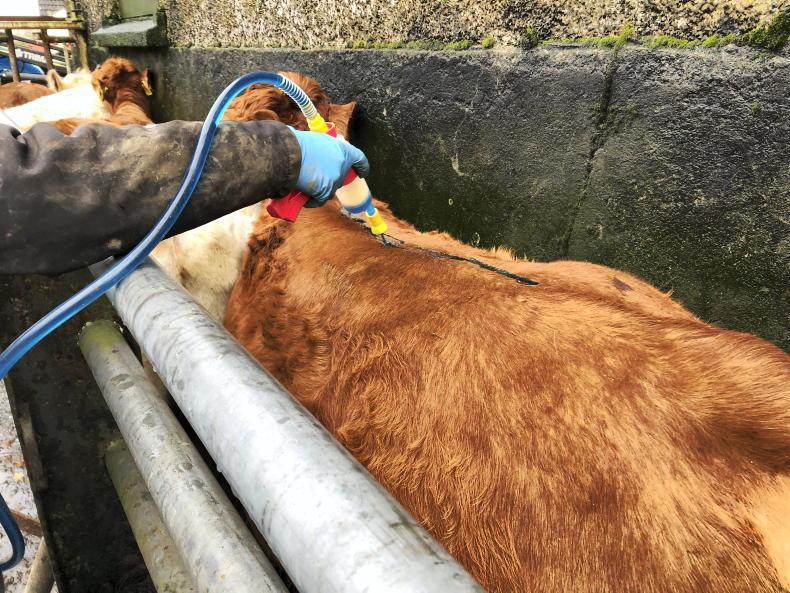
Treating cows with a pour-on drench to target liver fluke and worms.
Liver fluke control is very important in autumn/winter-calving cows, as the presence of liver fluke parasites adds to nutritional stress and has the potential to reduce animal performance and delay resumption of cycling. When formulating a control strategy for your farm, talk to your vet, taking into account what products have been used in the past.
Dose types
Animals in late autumn or early winter are usually infected with immature liver fluke, which can take eight to 12 weeks to develop into adult liver fluke. While housed cattle can’t be reinfected with liver fluke, and any parasites picked up on pastures will develop further if not treated.
If dosing once during the housing period, the following guidelines apply:
Using a product containing triclabendazole two weeks after housing (the only active ingredient effective against early immature liver fluke). If using a product effective against late-stage immature worms after five to eight weeks in housing.If using a product only effective for mature fluke after 10 weeks in housing. Always check the product label for the targeted fluke stage. Earlier treatments may prevent production losses if the fluke burdens are high. Any dosing products should always be used responsibly, at the right dose and at the right time, to keep them working for as long as possible.
Other parasites
Gut worms and lung worms are more spring and summer issues. Once weanlings/store cattle have been dosed with a product that has residual activity in the last few weeks, there should be no requirement to dose again for worms.
Cattle should be monitored for signs of coughing or ill thrift – investigate through sampling and dose accordingly. A lice treatment will also be required once cattle have been housed for a few weeks. Clipping can aid in lice treatment, help to reduce sweating and keep cattle cleaner during the winter housing period.
Liver fluke is a common parasite on Irish farms, one that can cause serious problems if left unchecked. Ireland’s mild, wet climate makes it an ideal environment for liver fluke to thrive.
Cattle affected with liver fluke can have reduced weight gain, fertility and milk yield. In very advanced stages, bottle jaw and anemia can occur.
While it’s been a relatively dry grazing year, the last few weeks of grazing turned wet, especially in the west of the country.
The most recent Department of Agriculture fluke monitoring report hasn’t been published yet, but the risk is nearly always high in the west and south west, with a moderate risk in the east and south east.

A blood clot in a liver damaged by liver fluke.
Regardless of where you are in the country, you should remain vigilant for the disease and at the very least ask about animals’ livers when they are being slaughtered.
Most factories feed into the AHI/ICBF beef health check system, where farmers receive reports on liver damage as a result of fluke infestation or lung damage as a result of pneumonia.
Farmers who opted for the faecal sampling option as part of the BEEP-S scheme should use these results in formulating a plan for a farm.
Liver fluke needs an intermediate host – the mud snail – to complete its life cycle. These snails live in poorly-drained, water-logged areas on the farm.
If animals are infected with adult liver fluke while on pasture, the fluke eggs are released, hatch and enter the snails, where they undergo further development.
The fluke parasites leave the snails and return to the pasture, usually from late summer to autumn, as an infective stage that can then be eaten by grazing animals (Figure 1).

Figure 1.
Control
Triclabendazole-based doses are the only product that can kill early immature, immature and adult liver fluke, with an effectiveness of between 90% and 100%. These have been widely used in cattle herds and sheep flocks and this is one of the reasons resistance has developed. Remember that mature fluke is over eight weeks of age, so if you are using a product that is only active against mature fluke, animals must be housed for at least eight weeks to get high efficiency.

Treating cows with a pour-on drench to target liver fluke and worms.
Liver fluke control is very important in autumn/winter-calving cows, as the presence of liver fluke parasites adds to nutritional stress and has the potential to reduce animal performance and delay resumption of cycling. When formulating a control strategy for your farm, talk to your vet, taking into account what products have been used in the past.
Dose types
Animals in late autumn or early winter are usually infected with immature liver fluke, which can take eight to 12 weeks to develop into adult liver fluke. While housed cattle can’t be reinfected with liver fluke, and any parasites picked up on pastures will develop further if not treated.
If dosing once during the housing period, the following guidelines apply:
Using a product containing triclabendazole two weeks after housing (the only active ingredient effective against early immature liver fluke). If using a product effective against late-stage immature worms after five to eight weeks in housing.If using a product only effective for mature fluke after 10 weeks in housing. Always check the product label for the targeted fluke stage. Earlier treatments may prevent production losses if the fluke burdens are high. Any dosing products should always be used responsibly, at the right dose and at the right time, to keep them working for as long as possible.
Other parasites
Gut worms and lung worms are more spring and summer issues. Once weanlings/store cattle have been dosed with a product that has residual activity in the last few weeks, there should be no requirement to dose again for worms.
Cattle should be monitored for signs of coughing or ill thrift – investigate through sampling and dose accordingly. A lice treatment will also be required once cattle have been housed for a few weeks. Clipping can aid in lice treatment, help to reduce sweating and keep cattle cleaner during the winter housing period.







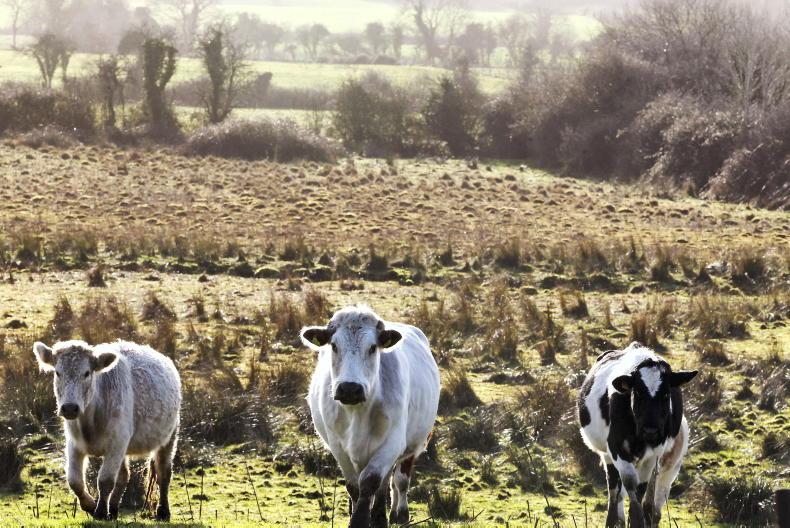


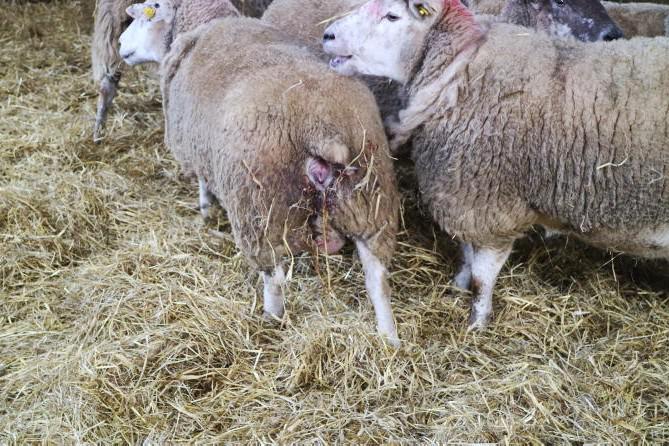
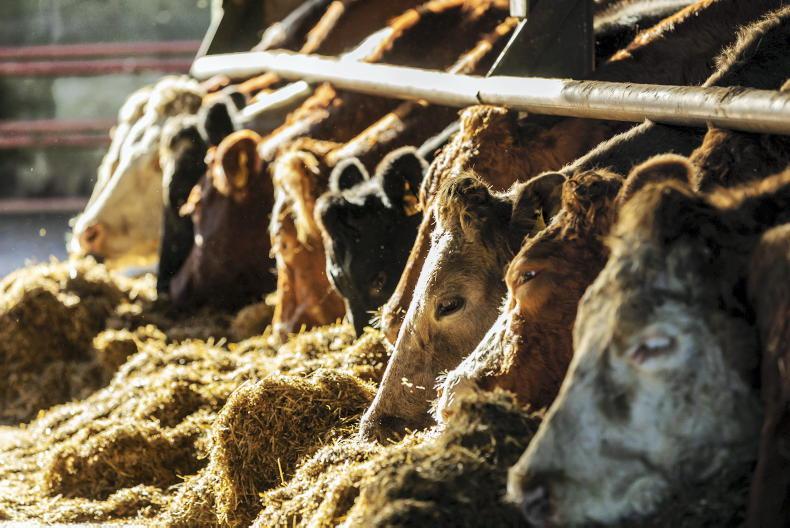
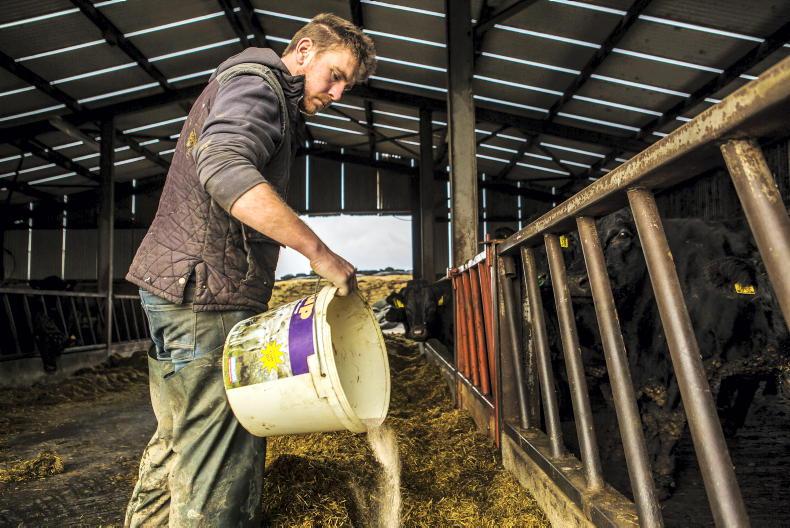
SHARING OPTIONS